

VOLUME I
OUACHITA PARISH

Dedicated To The Memory Of
WILLIAM KING STUBBS
(1910-1986)
Who practiced Architecture in Ouachita
Parish for over 50 years
LOUISIANA TECH UNIVERSITY
SCHOOL OF ART AND ARCHITECTURE
STUDENTS
Peter Aamodt
Lance Ballard
Andrea Beaver
George Bendeck
Paul Bratton
Jeff Brown
Steve Butler
Tom Clark
Darryl Cockerham
Steve Dixon
Jim Funderburk
Charles Gaushell
Scott Gay
Amy Grafton
John Greer
Harmon Haley
Juan Hidalgo
Billy Mack Hogue
Donna Hammons
Rico Harris
Teresa Harris
Johnny Hembree
Teresa Henderson
Keith Matthews
Brian McGuire
Philip Morse
Roberto Mossi
Cheong Muikit
Laura Netto
Jn Obasi
David Peterson
Wayne Renaud
Terry Roye
Ken Smith
Lloyd Smith
Shawn Sprinkel
Alexis Torres
Brian Veal
Ellen Wilson
FACULTY
F. Lestar Martin, Professor, Editor
Peter Schneider, Head, Department of Architecture
Dr. Joseph Strother, Director, School of Art and Architecture
Partial funding for publication was provided by:
Central Bank of Monroe—West Monroe—Ruston
Convention and Visitors Bureau of Ouachita Parish
Downtown Development Authority of Monroe
This book was also has been financed (in part) with Federal funds from the National Park Service, Department of the Interior, administrated through the Louisiana Division of Historic Preservation, Office of Cultural Development, Department of Culture, Recreation and Tourism. The contents and opinions do not necessarily reflect the views or policies of the Department of the Interior.
This program receives Federal financial assistance for identification and protection of historic properties. Under Title VI of the Civil Rights Act of 1964 and Section 504 of the Rehabilitation Act of 1973, the U.S. Department of the Interior prohibits discrimination on the basis of race, color, national origin, or handicap in its federally assisted programs.
LOUISIANA TECH UNIVERSITY
Ruston
1988
A most useful tool for understanding the culture of a region is the study of its architecture. Buildings in which people live, work, learn, and worship reflect their tastes, economics status, and aspirations. And it is through research of extant architecture of an area that knowledge of past culture is ascertained.
The Louisiana Tech University Department of Architecture has received grants from the State Division of Historic Preservation and the Division of the Arts to conduct field surveys of various parishes in North Louisiana. The purpose of the surveys has been to ascertain the types, location and quality of buildings 50 years or more in age. The architecture students toured the highways and back roads and photographed houses, outbuildings, churches, schools and commercial buildings. They interviewed occupants and area historians in search of information concerning original builder/owners. Each building was then documented, and the compilation of documentation was cataloged by the Louisiana Division of Historic Preservation in Baton Rouge.
Each student was required to prepare eight pen or pencil sketches of buildings of individual choice. The original drawings, of which there are now over 1300, were placed in the William King Stubbs Architectural Archives, the permanent collection of North Louisiana architectural drawings at Louisiana Tech University in Ruston.
The Ouachita Parish publication is the initial volume of a series entitled “The Architecture of the North Louisiana River Parishes.” The Ouachita River divides the parish into two distinct regions, the western portion being hilly country with the eastern portion being flat river delta terrain.
Thus, a unique opportunity exists to study in one parish various lifestyles and cultures as reflected in historic architecture. Not only is there the rural architecture of the western hills which contrast with the rural architecture of the delta lands, but these elements may be examined in relation to the urban architecture of Monroe and West Monroe—The Twin Cities on the Ouachita.
Following is the history of the settlement of the parish and descriptions of the areas west of the Ouachita, east of the Ouachita, and the urban fabric of the Twin Cities. A catalog of extant buildings according to plan type and characteristic details concludes the booklet.
So, join us now for a tour of the architecture of Ouachita Parish.

Fig. 1. Rear view of Cadeville Masonic Lodge, west of the Ouachita.
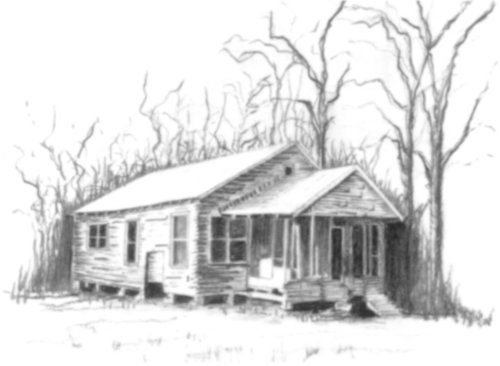
Fig. 2. A rural bungalow, east of the Ouachita.
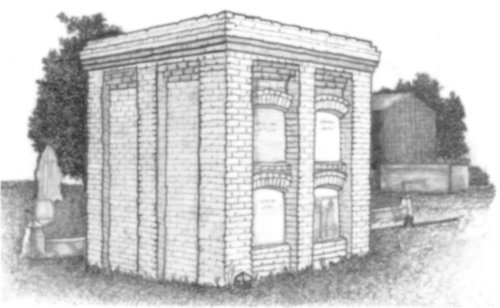
Fig. 3. In the old city cemetery, Monroe.

Map of Monroe and West Monroe, 1895.
The area now identified as Ouachita Parish had been occupied by aborigines since pre-historic times. Early European explorers included DeSoto (1542), La Salle (1682), and Bienville (1703). But it remained for Don Juan Filhoil with a commission from the Spanish governor to establish the first permanent settlement on the banks of the Ouachita. When Filhoil arrived in 1783, he named the site for the outpost Prairie des Canots for the Indian and trapper canoes gathered there. The military post was later named Ft. Miro in honor of the Spanish governor of Louisiana.
A colonization scheme formulated by the Spanish government enticed the Marquis de Maison Rouge to establish a settlement further north near the conflux of the Ouachita River and Bayou Bartholomew, the site of the present town of Sterlington. But this settlement lost its position as a rival for the seat of parish government after Filhoil laid out a plot in 1811 for a town on his plantation adjacent to Ft. Miro.
An exciting event occurred at the townsite in May, 1819, one which was to have a two-fold effect on the 400 inhabitants of Ft. Miro. The event was the docking of the James Monroe, the first steamboat to ply the Ouachita to this northerly point.
The ensuing excitement effected a village name change to “Monroe.” And for nearly a century the Ouachita River and steam powered boats combined to form a great highway of commerce and transportation for the region.
Overland transportation systems developed throughout the territory during the 1800’s. The earlier Indian trails often became bridle paths. In 1839 a road was cut through from Monroe to Vicksburg, but it was passable only in dry weather. Stage coach service was initiated in 1849. During this era a road was established westward through the hills beyond the river; another went northward toward Arkansas. These westerly roads later became wagon roads bringing caravans of wagons from Jackson and Claiborne Parishes to river trade centers such as the former town of Trenton, two miles north of the present town of West Monroe. 5 But it would be the advent of the Vicksburg to Shreveport railroad in the 1880’s which would provide the communication link between the east and west portions of the Ouachita Parish. In 1853 the state legislature granted the first charter for the construction of the Vicksburg, Texas, and the Pacific Railroad through North Louisiana. The first passenger service from Vicksburg to Monroe was in 1860. The tracks were destroyed by Union forces in the Civil War but were reconstructed and replaced in service by 1870. In 1882 the railroad bridge spanning the Ouachita was opened. It contained wood planking for vehicular and pedestrian circulation. Rail passenger service from Monroe to Shreveport commenced on July 10, 1884.
Ironically, the installation of the railroad service initiated the demise of two regional institutions, the town of Trenton on the west side of the river and the steamboat industry. Trenton, which had been platted into town lots in 1851, declined with the location of the railroad two miles south. Cottonport, a tiny community at the bridgehead on the west side of the Ouachita, changed its name to West Monroe and eventually developed into an important business and industrial community.
Steamboat traffic on the Ouachita, which had begun in 1819, yielded to the speed and flexibility of railroad service. The glamorous steamboating era of nearly a century of luxurious but sometimes tragic travel came to an end in the 1910’s.
Thus, the parish of Ouachita, which had been created in 1807 and which was subsequently divided into nine parishes, entered the 20th century as a rural agricultural region containing small urban entities. Surrounding Monroe were large plantations with cotton production as the major source of wealth. But with the discovery of gas by Louis Locke in 1916 in Morehouse Parish, the area became known as the Monroe Gas Field, one of the largest gas fields in the world at the time. With this wealth came progress—paved streets, “skyscrapers” and a salt water natatorium in the city of Monroe. And the parish prospered as well. Industries using available natural gas and paper mills using yellow pine from the nearby hilly region located in the area.
Transportation routes have continued to unite the parish to the region and to the world. U.S. Highway 80 was constructed in the 1930’s as a major east-west artery. Delta Air Lines began in Monroe as a small cotton dusting operation. And Interstate 20, completed in the 1960’s, now serves as an important coast-to-coast transportation route.
Ouachita Parish has been called the “mother parish” of northeast Louisiana. It has contributed much to the welfare of the region, and it continues to offer the leadership of a pacemaker parish as the twenty-first century approaches.
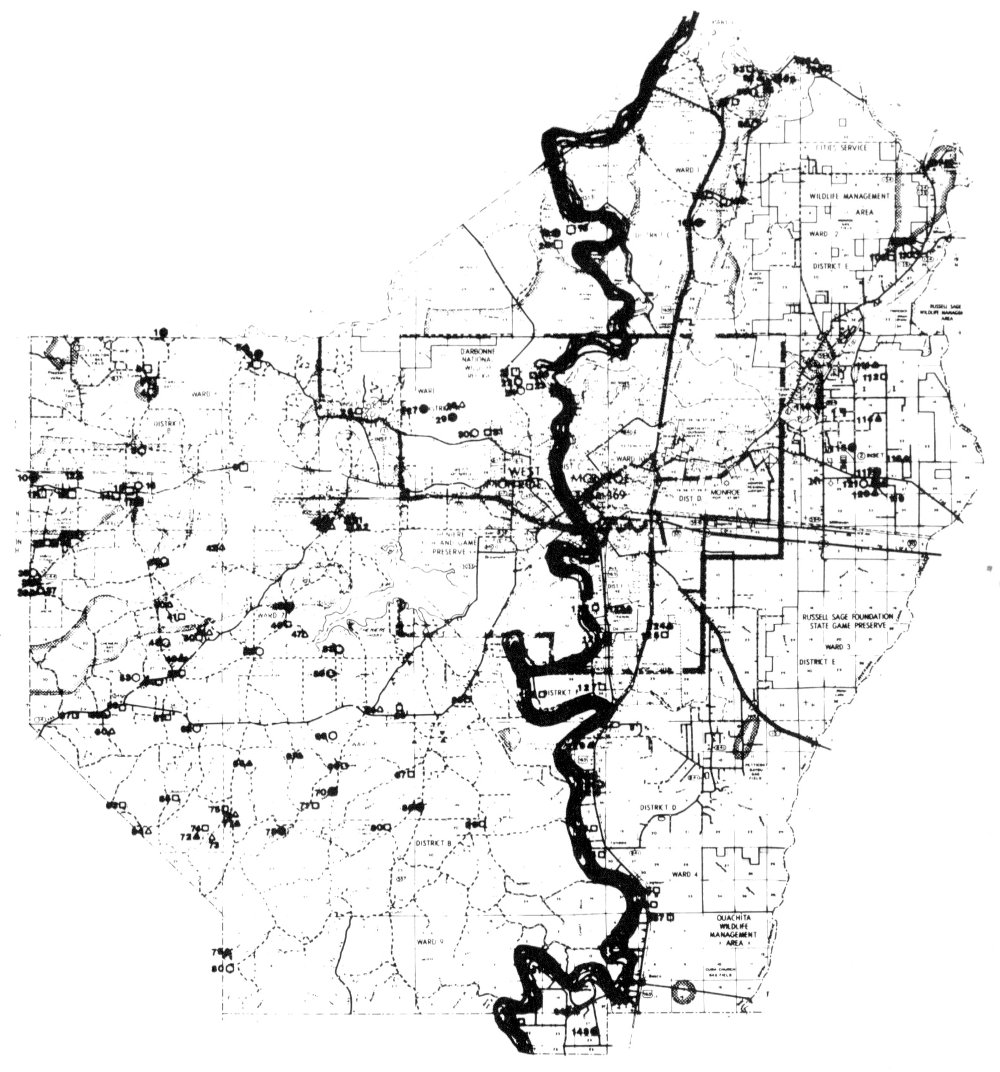
Map of Ouachita Parish, 1980’s.

The rolling piney hill landscape of Ouachita Parish west of the river contrasts with the delta overflow land east of the river. This contrast was reflected in settlement patterns with different land allocations and building techniques. The delta lands had been acquired by pioneers in the late 18th century and a plantation economy evolved. The less productive western hilly area was settled in the 19th century as small farm holdings. The eastern lands were subject to river overflows; houses were elevated and were generally of wood frame construction. Pioneer houses west of the river were often constructed of logs on wood or stone piers in close proximity to the ground.
Thus, contrasting cultures existed on opposite banks of the river. In this section the architecture of the western bank will be explored through an explanation of its extant architecture as evidenced in housing, out-buildings, churches and commercial buildings.
The early North Louisiana pioneers were more concerned with the erection of a shelter for protection from the elements and wildlife than they were with architectural styles. Folk houses were constructed of either horizontal logs or wood frame.
The typical log folk house plans of the mid 19th century in the hilly country were the single pen (room) wide and the dogtrot. The dogtrot plan consisted of the two single pens (rooms) separated by a floored and roofed but open walled space. (The designation “pen” is used only in reference to the rooms built of log construction).
Folk house plans constructed of wood frame during the 19th century were the one room, two room, saddlebag, dogtrot, central hall and later the gable front and wing. These house types will be examined subsequently.
Pictured on this page are examples of log construction. In figure 4 the logs were split; the inner room wall surface would be even. In figure 5 may be seen several elements of folk log house construction in the drawing of a house being dismantled. This dogtrot with open passage between pens had an attached porch, square logs with square notches, an end exterior chimney (base visible), three inch round pole roof rafters and gallery door openings with the head occurring at the seventh log. In figure 6 a close-up detail shows the square hewn logs and square notches on this dogtrot.
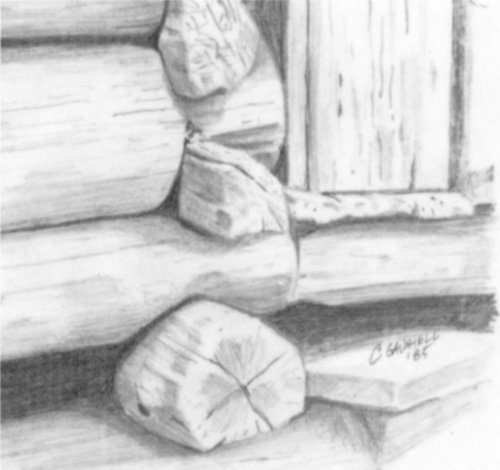
Fig. 4. Log notch detail (Bldg. 76).
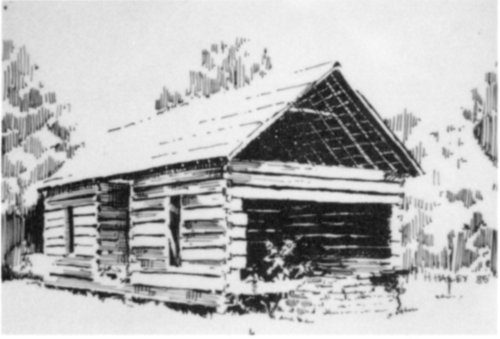
Fig. 5. An 1880’s square notch log dogtrot (Bldg. 6).
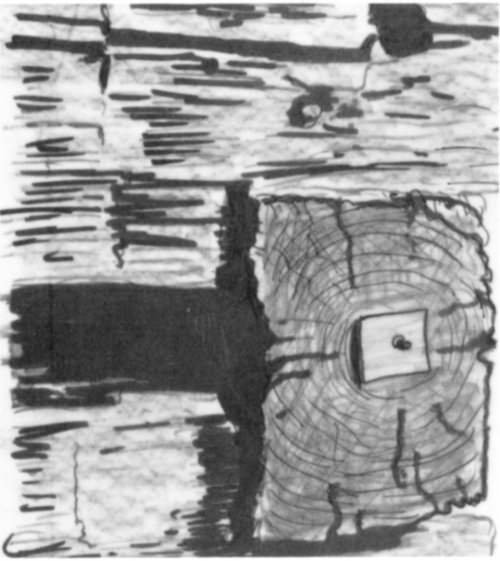
Fig. 6. Square notch detail (Bldg. 6).

Fig 7. An 1898 central-hall house with integral gallery (Bldg. 55).
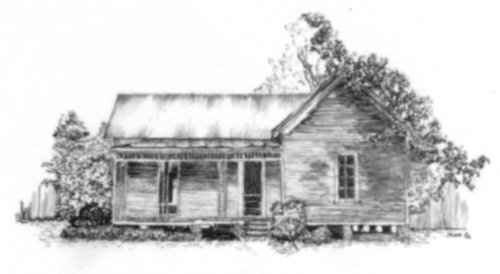
Fig. 8. Late 1890’s gable-front-and-wing house (Bldg. 15).
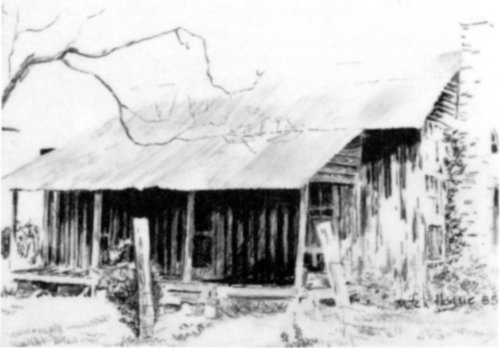
Fig. 9. Late 1880’s two room house with vertical board and batten siding (Bldg. 77).
During the late 19th century and early 20th century wood frame construction was used to build high style and vernacular houses in the Greek Revival and Queen Anne styles. Figure 7 depicts a late vernacular Greek Revival house with a symmetrical plan, and figure 8 shows a Queen Anne house with asymmetrical plan.
The central hall plan in figure 7 has a steep roof with an integral gallery. Windows are six lights over six lights. A wing was attached to the rear. The original chimney is still visible.
The gable front and wing plan house in figure 8 was popular in the period from 1890 to 1920. The key feature was the forward wing which occupied a portion of the full gallery and the resultant half porch. Often the front wall of the wing was angled, or cut away, but the full roof gable remained. Or, an additional polygonal bay was added. Note the Queen Anne scroll and trim on the porch. This replaced the simple 6″ × 6″ square post of older house forms. This house plan sometimes featured a central hall.
Though in a deteriorated state, the two room house in figure 9 has features worth noting. The siding is vertical board and batten, a technique of construction which appeared with the erection of lumber and railroad worker housing in the 1880’s. The front covered area does not extend the full width of the core; therefore, it is termed a “porch” in contrast to the “gallery” of the previous two examples. Also, it is “attached” and not “integral” with the main core roof structure.
The 20th century houses shown on this page exhibit a quest for individuality and contemporary expression. Figure 10 depicts a typical central hall plan. The roof is hip and not the usual gable. This detail required a shorter gallery which was not flush with the extreme end walls. The front door is flanked by full width windows. Shutters were added to the front gallery windows.
The bungalow plan appeared in North Louisiana in the mid 1910’s. This two room wide and two or more room deep house type (figure 11) proliferated in rural and urban areas. In its simplest form there was a forward facing gable with a porch. Here is depicted a half porch. Double windows were used.
The 1930’s house illustrated in figure 12 is typical of the one room wide, several room deep shotgun plan found throughout much of Louisiana. This plan type became the typical house type for workers in New Orleans after the Civil War. It was seldom found in the hill parishes away from the waterways. In the shotgun depicted in figure 12 plywood siding has been installed over the original horizontal siding on the porch.
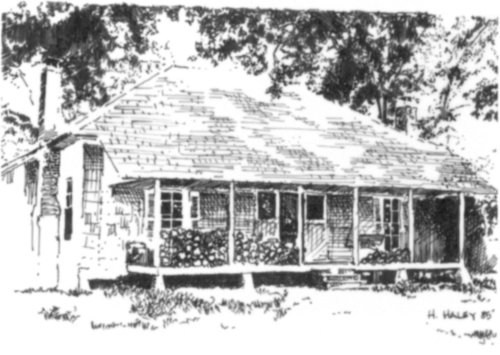
Fig. 10. A 1910’s central hall house with attached gallery (Bldg. 3).
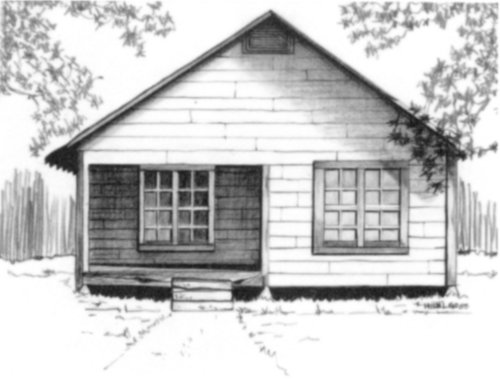
Fig. 11. The typical bungalow, two rooms wide with gable front (Bldg. 52).
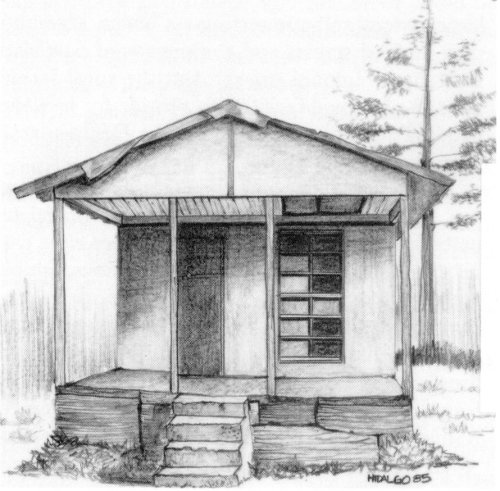
Fig. 12. Circa 1930 shotgun, one room wide with gable front (Bldg. 50).

Fig. 13. A transverse crib barn with wood shingles (Bldg. 73).
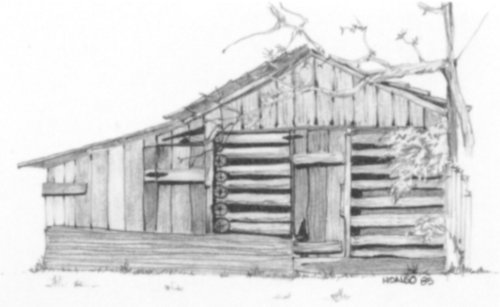
Fig. 14. Animal shelter with round logs, saddle notches (Bldg. 47).
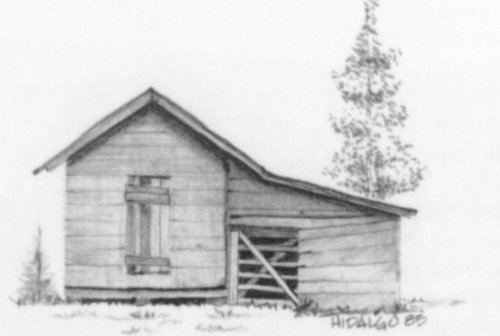
Fig. 15. Storage building with wood floor and an addition with dirt floor (Bldg. 40).
The small farms in the hill country were to a large extent self-supporting. Certain elements, such as food staples and clothing, were purchased at area or regional stores. But the rural farmer needed additional facilities to provide for his other needs. Facilities were built on the farm separate from the dwelling itself.
Farm outbuildings may be placed in two categories, dwelling-related outbuildings and farm-related outbuildings. Dwelling-related buildings were used on a daily basis and included the well house, smoke house, storage room, chicken house, privy, and sometimes the storm shelter. Farm related buildings, those necessary for agriculture and caring for livestock, included barns (single crib, double crib, transverse crib), storage buildings and often the potato house, blacksmith shop and syrup mill. “Crib” is a term used as a designation for room in farm outbuildings.
The drawings on this page depict the nature of the construction of farm outbuildings. They are basic structures erected by the farmer and his neighbors from available materials. Usually they are in the rear of the dwelling. Style and quality and finish of materials were not of great importance. These buildings were altered as needed.
The largest outbuilding was the barn which was used for the protection of horses and cattle and the storage of wagons and farm equipment. The transverse crib barn in figure 13 included, in addition to the log crib, an open wagon shed, a sealed storage area and a loft for hay storage. Note the wood shingle roof and combination of rough sawn horizontal siding, logs, and vertical plank siding.
The small building in figure 14 is similar in design to a smoke house but was probably used for animal shelter. The round logs have saddle notches and no chinking between logs. Ventilation was thus provided. The side addition gave storage area.
The clean, simple storage building in figure 15 was constructed of flush sawn siding with a raised floor. The opening was for ventilation and light. The side addition has a dirt floor.
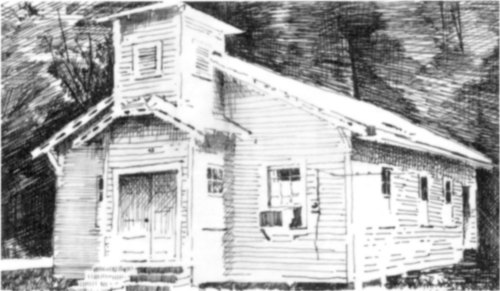
Fig. 16. 1920’s rural church with single tower (Bldg. 20).
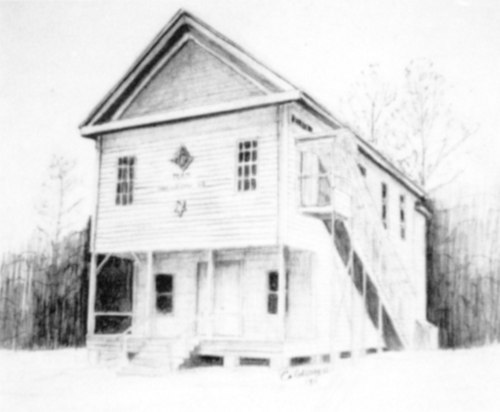
Fig. 17. The 1885 Cadeville Masonic Lodge. (Bldg. 54. Rear view in fig. 1).
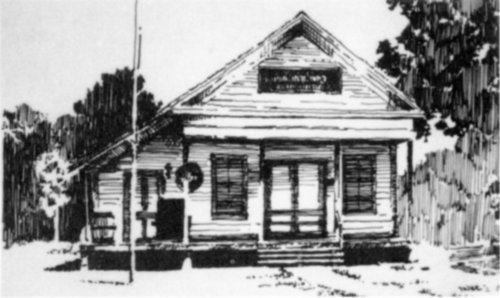
Fig. 18. The Red Rock General Store, circa 1910, with gallery and flagpole (Bldg. 7).
The physical area required for the small farm caused the dwellings to be dispersed among the hills. One result was the existence of the lonely farmstead and the extended neighborhoods. Community feelings developed and interactions occurred at places of meeting. These meetings were both formal and casual. The formal occasions would occur at the church, school, or in rare cases the Masonic Lodge. Informal gatherings occurred at the rural general store.
The predominant religions in the hilly country west of the Ouachita were Baptist, Methodist, and Presbyterian. Church services would be held on Sunday. Some denominations would also have weekly prayer services. Additional community happenings were the annual graveyard clearing with “dinner on the ground” and a revival. At these events family and friends would discuss newsworthy events. Figure 16 is an example of the small rural church which was built in the region.
The Masonic Lodge was once an important community establishment. The Cadeville Lodge, figure 17, is one of the few lodge buildings remaining in North Louisiana. The first floor could be used for public services or community meetings. But the second floor was reserved for the private functions of the lodge members.
The general store not only provided for the physical needs of the rural inhabitants, but also it contributed to their emotional well-being as well. The store owner would stock his business by traveling to distribution centers, often on the Ouachita River, purchasing goods and selling them to area residents. The regular weekly journey from the farm to the store would be a time for sharing news and discussing public events. Thus, supplied both physically and emotionally, the family member, or members, would return to the rural dwelling.
The general store shown in figure 18 had a porch for neighborly use, wide openings and a high ceiling for ventilation, and it even featured a flag pole in the front yard.

The alluvial lands on the east side of the Ouachita fostered a settlement pattern which contrasted greatly with that of the hilly country west of the river. Large holdings had been claimed during the latter part of the 18th century and early 19th century. The Ouachita River then was the only source of regional transportation. Therefore, it was necessary from a communication transportation aspect that the land holdings possess headrights on the river.
The resulting land holdings tended to have narrow frontage but deep extent. Annual spring overflows deposited silt near the river edge, and this high bank was the obvious location for the main buildings of the holding. Thus, the land also determined the hierarchy of architectural development on the holding.
This hierarchy of spaces on the plantation followed a definite pattern. First, the river landing provided an entry to the owner’s house. Behind the house would be the workers’ quarters, and beyond these were the buildings necessary for the operation of the plantation.
Pictured on this page are details of two plantation houses typical of those which once lined the east bank of the Ouachita. The 1838 Filhoil raised cottage of figure 19 has a Greek Revival portico with fan light in the front gable, Doric columns and a balustrade. The house was elevated for protection from the river overflow.
The Whitehall Plantation house, figure 20, was built in 1858. Greek Revival style details include the squared transom and sidelights at the front door, low roof pitch, and pedimented window trim detail on the front gallery, figure 21. The gallery siding was flush but beaded. The windows extended to the floor allowing easy passage from interior rooms to the gallery. Operable, slatted shutters allowed sun control, ventilation, privacy.
Whitehall is a 1½ story house with dormers, attic rooms, and an integral gallery. These were typical features for the Greek Revival cottages of both North and South Louisiana. The central hall plan is another characteristic of this type, which is generally associated with American settlement.
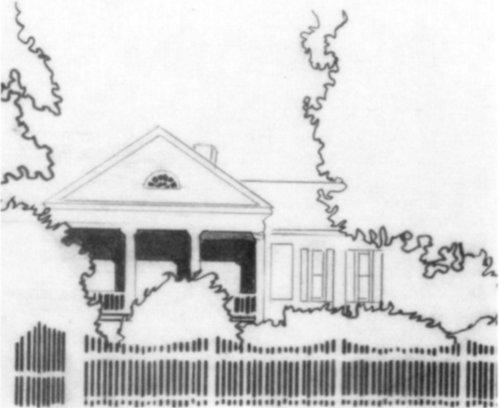
Fig. 19. The 1830 Jean Baptiste Filhoil Greek Revival plantation house (Bldg. 134).
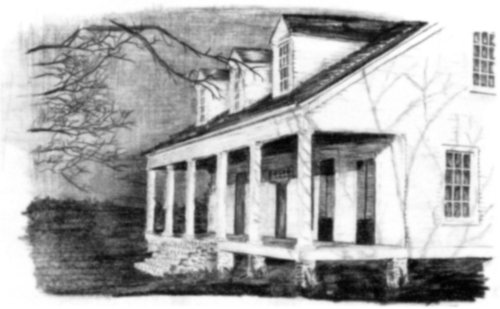
Fig. 20. Whitehall Greek Revival plantation house, 1858 (Bldg. 127).
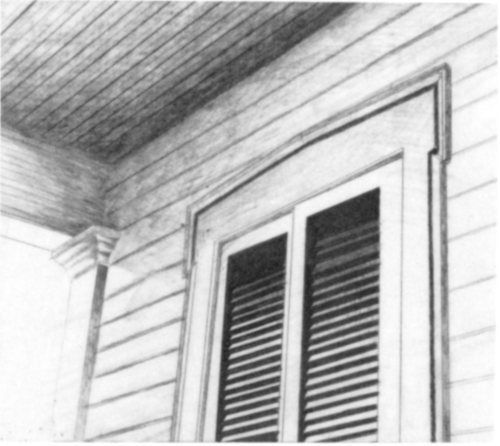
Fig. 21. Detail of Whitehall gallery window, pilaster (Bldg. 127).

Fig. 22. Circa 1910 two room house with integral gallery (Bldg. 120).
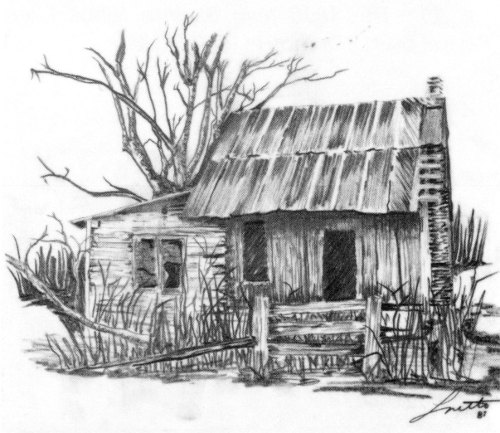
Fig. 23. Front view of a circa 1920 one room house (Bldg. 115).
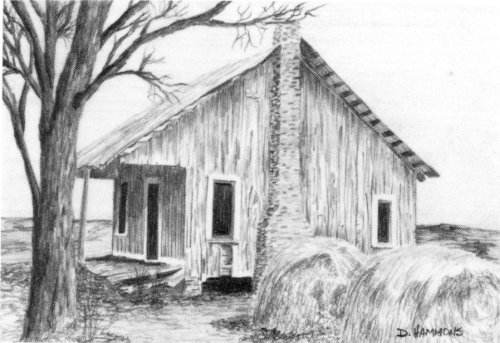
Fig. 24. Side view of 1920 one room house (Bldg. 115).
The alluvial lands east of the Ouachita contained two categories of dwellings, those of the plantation owner as previously described and the houses of the tenants and small land owners. The dwellings depicted on these and subsequent pages are typical of the latter category. The basic folk house plan types used were the one room, two room, shotgun and later the bungalow. Houses were usually constructed of wood frame with vertical board and batten siding or horizontal milled siding.
A feature which the basic one room and two room plan dwellings had in common was the integral front gallery. The gallery roof framing was part of the roof structure of the core of the dwelling. One might notice in figure 22 that although two gallery columns are absent, the roof is still standing.
The one room type is illustrated in figures 23 and 24. The front view of the circa 1920 house shows a side addition to the original core room. The side view, figure 24, shows that this was originally two rooms deep since the space usually occupied by the rear gallery was enclosed. The roof had wood shingles on wood lath. The shingles were later replaced with sheets of tin.
The two room plan houses in figures 25 and 26 were expanded as the space requirements of the occupants increased. The first example has a rear appendage. Vertical board and batten siding was used on the addition, but an inconsistency in window sash selection occurred. In figure 26 the appendage was built as a shed addition on the side. This large two room house is two rooms in depth. This additional depth allows the roof to be higher, a definite advantage for the reduction of summer heat.
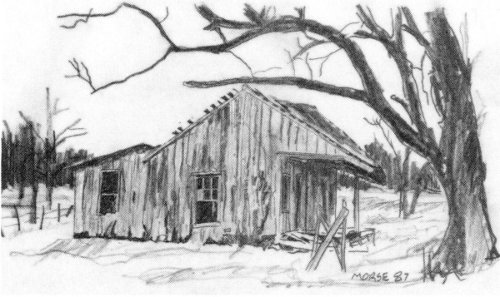
Fig. 25. Two room house with board and batten siding (Bldg. 118).
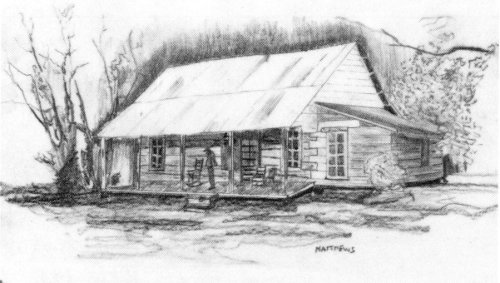
Fig. 26. Circa 1910 two room house on the O.Z.O. Plantation (Bldg. 129).
The shotgun type house plan, figure 27, was used abundantly on the river plantations. The typical plan was one room wide and two or more rooms deep. There were front and rear gables. Variety occurred at the front gallery as evidenced in the pair of shotguns illustrated. The gallery might be the full width of the core allowing space for chairs and thus creating an extra “room” for relief from the summer heat of the interior rooms. This gallery also provided a place for social interaction between the occupants and passersby. In contrast with this situation, the porch on the right was of the width necessary only to protect the door from the elements and to provide shelter for those entering. As shown, shotgun houses were often in close proximity to each other. This feature may have had its background in the fact that the shotgun plan had been used in urban situations in New Orleans where property was extremely valuable. However, when the plan was transported to a rural situation, the close proximity characteristic remained.
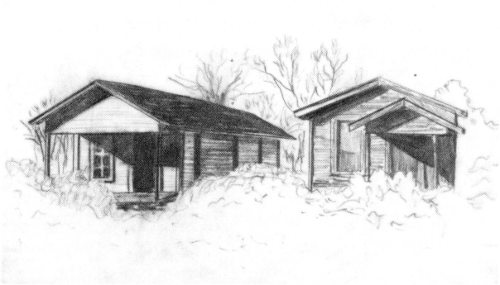
Fig. 27. A pair of 1920’s shotgun houses (Bldg. 125).
As the 20th century advanced so did the plans and techniques of constructing the folk house. The bungalow plan was introduced into North Louisiana circa 1915. This plan type was two rooms wide and two or more rooms deep with front and rear gables. The bungalow plan would continue to be a popular house type in the region until the advent of the ranch type plan after World War II.
The dwelling pictured in figure 28 was typical of the bungalow of the 1920’s. As previously mentioned in reference to the shotgun house, the type of bungalow front gallery varied. The contrast may be observed in figures 28 and 29—the nearly full width gallery with hipped roof and the half porch with gable roof. An almost universal feature of the bungalow house was the use of exposed rafter ends.

Fig. 28. A 1933 bungalow plan with hipped gallery (Bldg. 123).
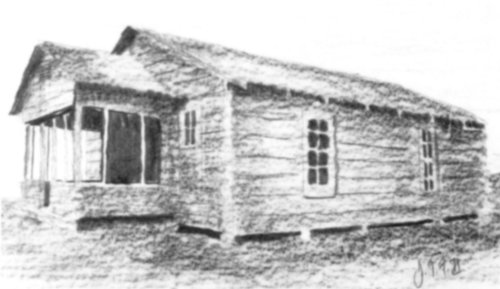
Fig. 29. Gable screened porch on a Circa 1920 bungalow plan house. (Bldg. 95).
It might appear that the occupant of the two room house in figure 30 desired to update his dwelling to have contemporary characteristics similar to those of the bungalow. The remaining half porch was similar to those of many of the bungalow houses. The currently popular double window was used in lieu of the usual single opening. And the rear extension created the multiple room depth characteristic of the bungalow.
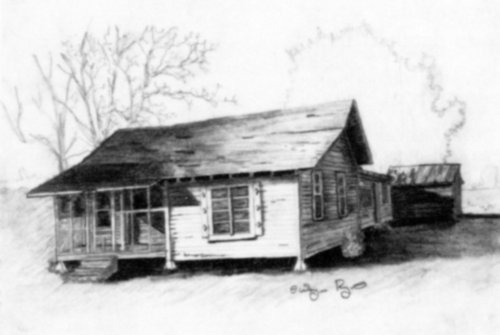
Fig. 30. A 1930 house with bungalow features (Bldg. 143).
As was the case with the small farms west of the river, so the plantations and farms east of the river required outbuildings. Several examples of these outbuildings are represented.
On this page are shown transverse crib barns; the major openings occur on the end elevations. In figure 31 the typical transverse crib barn plan is evident with the center aisle being flanked by several cribs as shelter for stock. Above the opening is a loft for hay storage. This drawing is also descriptive of the landscape of the delta plantation—broad level expanses of open land in cultivation. Twentieth century communication systems are evident with the dirt road and telephone poles.
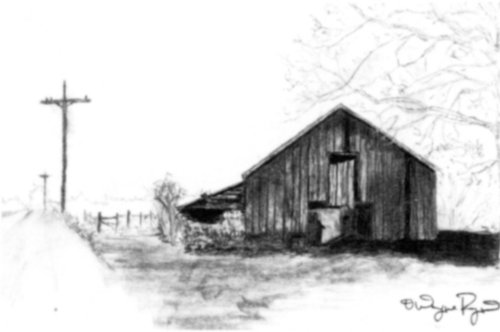
Fig. 31. Transverse crib barn in a delta landscape (Bldg. 140).
In figures 32 and 33 variations of the transverse barn are illustrated. A barn with side shed additions, vertical plank siding and loft storage would have sheltered a wagon in the center aisle (figure 32). A unique solution to the high water problem is evident in the barn shown in figure 33. The structure is raised and provides vehicle and stock shelter in dry seasons, but any valuable equipment could be removed as spring overflows inundated the land.
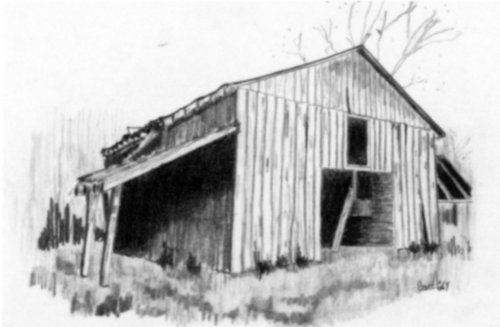
Fig. 32. Vertical planks on transverse crib barn (Bldg. 93).
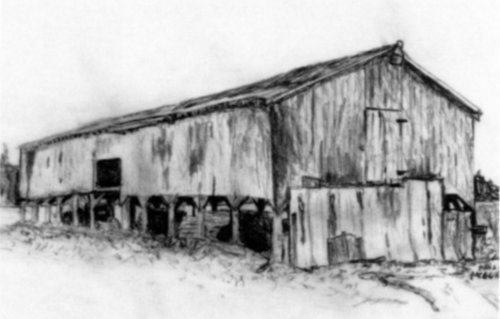
Fig. 33. A barn raised for high water protection (Bldg. 112).

Fig. 34. Circa 1900 log storage building (Bldg. 128).
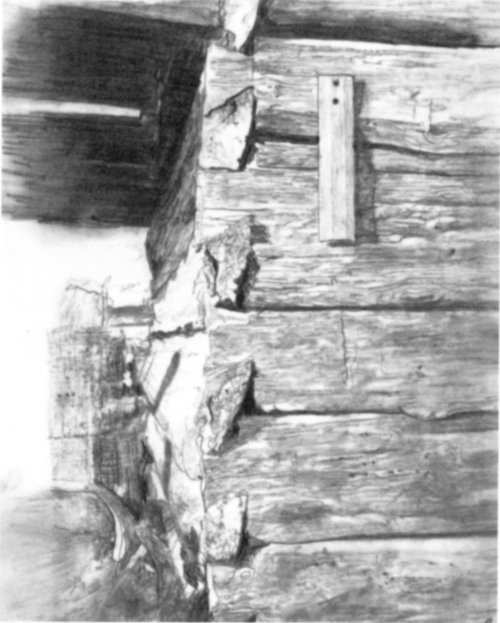
Fig. 35. Half dovetail notches on 1900 log building (Bldg. 128).
Log construction of outbuildings directly on the ground was not a common model of construction in the delta land. The obvious reason was that frequent overflows would tend to produce rapid decay of the wood members in contact with the soil. But a rare exception to this practice was found in the building illustrated in figures 34 and 35. The relatively tall log storage building has continuous timbers as cantilever supports for side shed roofs. Whether these sheds ever had vertical post supports was not obvious on site inspection.
The corner wall detail, figure 35, indicates that the large hewn timbers were assembled using half-dovetail notches. The horizontal logs were so closely cut that a minimum air space between logs remained. Chinking material was not used to fill these spaces.
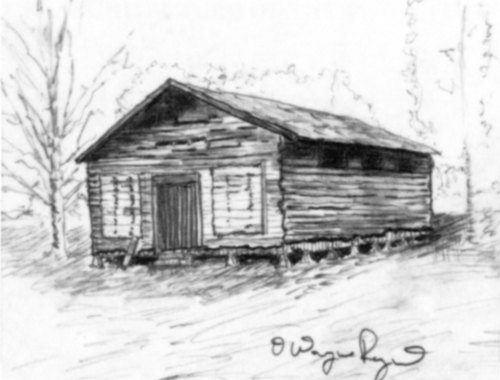
Fig. 36. Commissary store on Garrett Plantation (Bldg. 131).
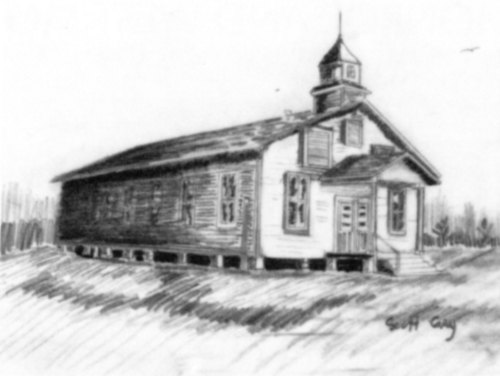
Fig. 37. 1920’s church on the plantation (Bldg. 98).
A commercial establishment which was necessary in the delta was the commissary. It served the same function as the general store previously described for the hill lands west of the river. The commissary depicted in figure 36 has double doors flanked by large display windows. High windows on the side walls provide light and cross ventilation. This, too, would be a place for exchange of conversation as well as purchase of goods.
The community church would serve the plantation workers and their families. The buildings were generally composed of one large assembly room and classrooms as appendages to the main building. A porch protected the double entry doors. A mark of individuality might have been created in the treatment of the belfry. The church illustrated in figure 37 has a single small belfry, but often twin towers were constructed. In addition to this function as a summons to worship, the bell was often used as a community signal of momentous events such as a birth or death on the plantation.

Field research of the buildings of Ouachita Parish has revealed that there are three distinct characteristic types of architecture. In the western hilly region of the parish is the small farm type, and in the eastern river delta region the rural plantation type prevailed. Both of these have been previously described. The third category of architecture is the urban type, found within the environs of Monroe and West Monroe.
Whereas the rural architecture, with the exception of the plantation owner’s house, tended to be utilitarian and unconcerned with stylistic trends, the urban architecture very often was reflective of the currently popular national architectural styles. The styles most evident in extant residences in Monroe and West Monroe include Greek Revival, Queen Anne, Colonial Revival and California Bungalow.
Styles found in ecclesiastical, civic and commercial buildings include Victorian Gothic and the Classic Revivals of the twentieth century.
Following is a sampling of the various folk and styled architecture found within the city limits of Monroe and West Monroe.
The Greek Revival house pictured in figure 38 was built circa 1835 as the residence of the overseer for Lower Pargoud Plantation. A companion residence was constructed on the Upper Pargoud Plantation and exists at the end of Island Drive in Monroe.
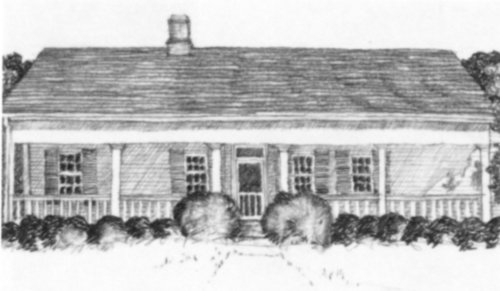
Fig. 38. The Lower Pargoud Plantation overseer’s house (Bldg. 143).
Layton Castle, figure 39, was begun before 1820 as the residence of Judge Henry Bry. John James Audubon was a guest in the home during his visits to the wilderness of North Louisiana. In 1910 the house was renovated to resemble a European chateau.
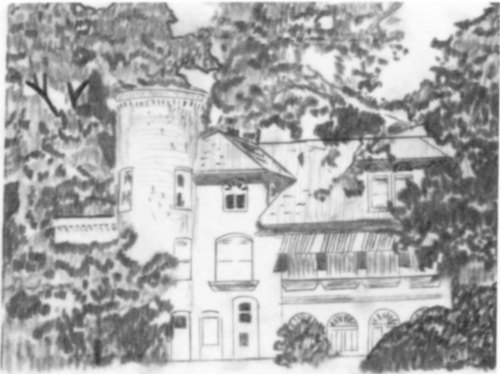
Fig. 39. Layton Castle, begun before 1820, remodelled 1910 (Bldg. 144).
The 1882 Cox house depicted in figure 40 was approached through an oak alley facing the road, which later became South Grand Street. In the rear was a flower garden leading to the river.
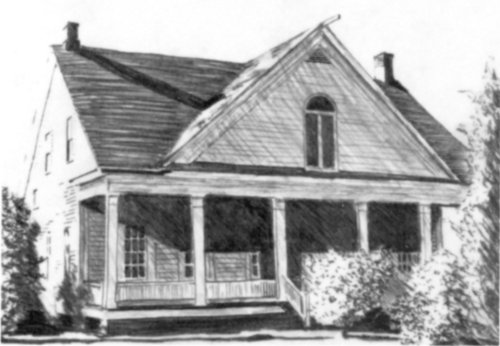
Fig. 40. The 1882 Cox House on South Grand, Monroe (Bldg. 122).
These examples of 19th century houses were originally constructed in rural farming areas which have subsequently been incorporated into the city of Monroe.
The popular circa 1890 through 1910 house style, Queen Anne, had numerous identifying features. A steeply pitched roof of irregular shape often had a dominant front facing gable. Patterned shingles, cutaway bay windows and various other elements were used to avoid a smooth-walled appearance. The facade was asymmetrical, and often it had a partial or full width porch along a side wall as well as on the front.
Queen Anne dwellings were also noted for their decorative detailing. Delicately turned porch columns and decorative spandrels with knob-like beads were common. Spindle work was used on railings, at porch ceilings, and under the roof overhangs at cutaway bays.
The house in figure 41 was constructed with forward gables, a partial porch on the front and a cutaway bay. Decorative elements include the ornamented gables and a spindlework frieze between the porch posts at the ceiling.

Fig. 41. Queen Anne detailing on a circa 1890 house. (Bldg. 145).
Miss Julia Wossman’s house, figure 42, was moved from downtown to St. John Drive in the 1950’s. Note the forward gables, turned porch columns, the wrap-around porch, and spindlework at the cutaway front and side bay windows. The porch also has spindlework, brackets and knob-like beads in the frieze. Gables contain fish scale patterned shingles.
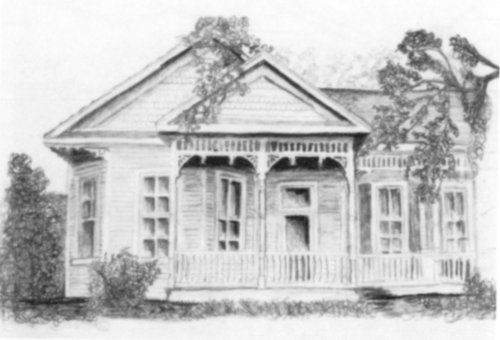
Fig. 42. Miss Julia Wossman’s house, circa 1890 (Bldg. 146).
The houses described represent only a sampling of the full range of extant Queen Anne houses in the urban area of the Twin Cities.
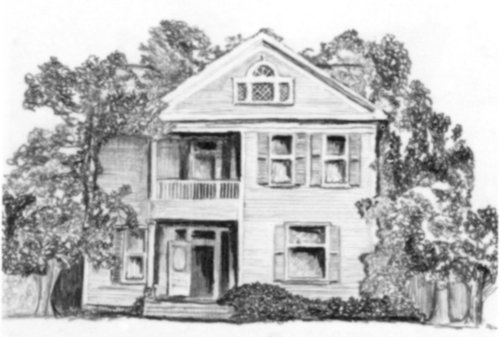
Fig. 43. The 1905 E. L. Neville Colonial Revival two story house (Bldg. 147).
Houses built after 1900 with the characteristics described as follows have been designated as being Colonial Revival style. A basic characteristic feature of this style was the accentuated front door 23 with a porch supported by slender columns. Doors often had overhead fan or transom lights with sidelights, and windows contained double hung sash with multi-pane glazing in one or both sashes. As the 20th century advanced, windows were grouped in pairs of even units of three.
The Ernest L. Neville house on Hudson Lane, Monroe, figure 43, was erected as a two story house with a dominant front gable with a multi-paned Palladian window, complete with keystone. The half-porch is full height with a railed balcony and Doric columns.
The circa 1914 James Harvey Trousdale house, figure 44, on Hudson Lane is Colonial Revival in detailing, but the dominant, nearly square, configuration resembles that of a 19th century Louisiana raised cottage. Note the full story height raised basement area with the broad entrance steps.
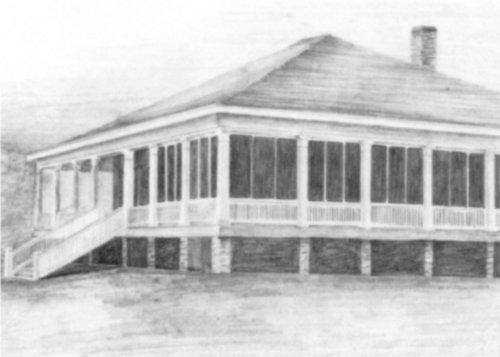
Fig. 44. The J. H. Trousdale House circa 1914 (Bldg. 148).
The George Weaks House on Riverside Drive, Monroe, figure 45, was built during the first decade of the 20th century. The full two-story semicircular porch with columns and pilasters has a balustrade and broad dormer at the roofline. The front door is accentuated with square transom and sidelights. Note the elaborate expanse of entry steps at the porch floor. Windows are glazed with multiple upper sash panes and a single lower sash pane.
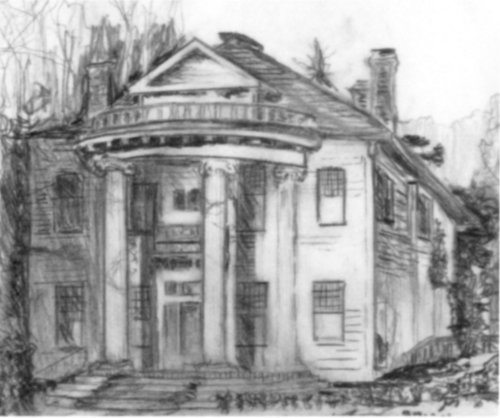
Fig. 45. Classical porch on circa 1900’s Weaks house.
Closer examination of the Weaks House in the porch detail, figure 46, reveals elaborate Colonial Revival detailing. The columns have Ionic capitals and fluting. The curved entablature with dentils is enhanced further with the application of moulded wood brackets under the roof eaves.
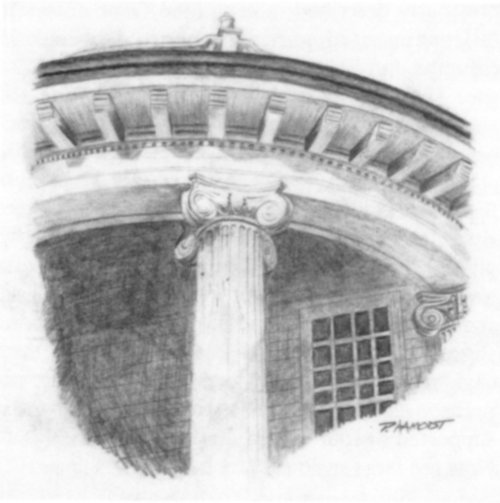
Fig. 46. Ionic column capitals on Weaks house (Bldg. 149).
The Neville, Trousdale, and Weaks Houses were built near the river in the area expanding to the north of Monroe. They, along with the Governor Hall house which follows, are examples of the early Colonial Revival period in Monroe.
The Governor Luther Hall Colonial Revival home pictured in figures 47 and 48 was erected on Jackson Street in the older section of Monroe circa 1906. It contains the characteristics of the style previously described—accentuated front door with full pedimented portico supported by slender columns, fan light and sidelights and multi-panes over single pane sashes. The Hall house also contains elaborate detailing in addition to these usual characteristics of the Colonial Revival style.

Fig. 47. Gov. Luther Hall’s circa 1906 home (Bldg. 150).
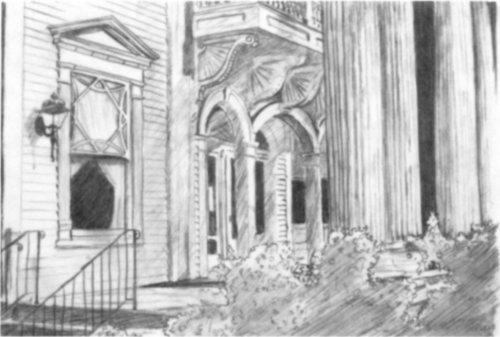
Fig. 48. Elaborate porch detail on Hall home (Bldg. 150).
The detail drawing of the Governor Hall house, figure 48, is illustrative of elaborate, nearly excessive, detailing. The window not only possesses pilaster trim with an entablature and pediment, but also a design featuring interlocking segmental and square panes in the upper sash. The entry door is slightly recessed which allows space for three segmented arches with keystones on Doric columns. And, in addition, the balcony above is supported by four curved fan-like wooden brackets. Note the large scale column bases.
The Travis Oliver house at the north end of Riverside Drive in figure 49 is indicative of the continued popularity of the Colonial Revival style in the cities. Built circa 1930, this two story house, similar to those previously described, has a full porch with slender columns, a small balcony and accentuated front door with an elliptical transom and sidelights. But certain mutations make this Colonial Revival house distinct from those previously described. The lower front windows are wood casement with a semicircular wood fan above. Second story windows are large eight over eight pane double-hung sash. Most importantly, the house is of brick veneer construction. Those previously described have horizontal wood siding. The 1930’s decade witnessed the apparent popularity and desirability of the use of brick in preference to wood as an exterior cladding material.
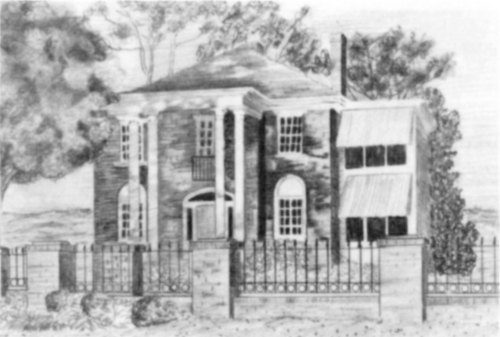
Fig. 49. Circa 1930 Oliver house on Riverside, Monroe (Bldg. 151).
Although Colonial Revival has been a dominant style for house construction in the Monroe and West Monroe area during the 20th Century, other styles are represented and will be described following.
During the first three decades of the 20th century, while the Colonial Revival houses were being built in both one and two story versions, other styles were being represented in the Twin Cities. The Tudor Revival, Prairie Style and the California Bungalow received widespread acceptance in the 1920’s and 1930’s. One selection each of the Tudor Revival and Prairie Style are illustrated herein; also depicted is an example of a hybrid Queen Anne-California Bungalow House.
The Tudor Revival style, popular in the United States from 1890 to 1940, received only nominal acceptance in North Louisiana. Characteristics included a simple box plan with extensions, facade dominated by two or more prominent cross gables and windows in multiple groupings with multipane glazing. Also used were massive chimneys with chimney pots.
The Masur Museum on South Grand Street in Monroe was constructed 1929 by Elmer Slagle, Sr. Depicted in figure 50 are the characteristics of the Tudor Revival described above. This stone veneer house has a mezzanine porch in the rear overlooking a formal garden and the Ouachita River.
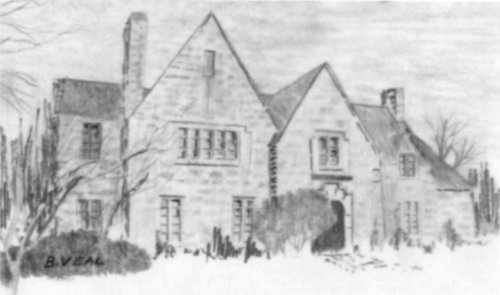
Fig. 50. The 1929 Slagle house, now Masur Museum (Bldg. 152).
A Monroe landmark is the 1926 G. B. Cooley house also on South Grand Street. See figure 51. Designed by the architect Walter Burley Griffin, an associate of Frank Lloyd Wright, the plan was laid out to resemble the decks of a steamboat. Mr. Cooley, the owner, was a steamboat captain who plied the Ouachita for many years. The Prairie Style house has 100 windows which may be opened to take advantage of summer breezes.
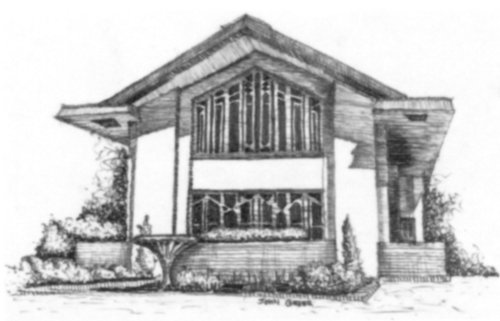
Fig. 51. Cooley house designed in the Prairie Style (Bldg. 153).
An interesting Trenton Street house in West Monroe, figure 52, represents a mingling of stylistic detailing. The gable has wood shingles similar to those used in the Queen Anne styles, and the small patterned window panes of that period are reused in a new form. But the exposed rafter ends and expansive overhangs are characteristics of the California Bungalow style.

Fig. 52. On Trenton Street, West Monroe, a gable detail. (Bldg. 154).
Thus, Monroe and West Monroe contain a variety of residential stylistic expressions as evidenced in the extant houses.

Fig. 53. A California Bungalow in north Monroe (Bldg. 155).
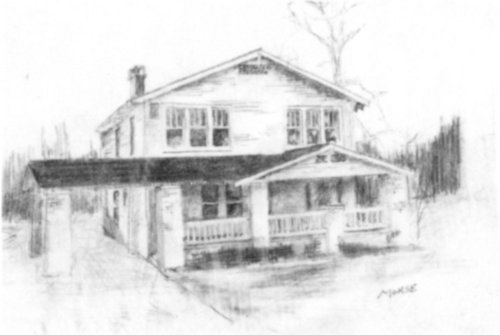
Fig. 54. An expressive West Monroe California Bungalow (Bldg. 156).
An innovation in housing design and stylistic detailing occurred in North Louisiana during the second decade of the 20th century. The houses of two California architects, Charles and Henry Greene, led to the establishment of a style known as “Craftsman.” Several influences—the English Arts and Crafts movement, interest in oriental wood architecture and training in the manual arts—may have encouraged the Greene brothers to design intricately detailed buildings. Their work and other California residences received publicity in the various national magazines. Thus, the one-story Craftsman house soon became the most popular and fashionable smaller house in the country. In Louisiana these houses have been labeled “California Bungalows.”
The characteristic features occurred normally on the facades, that portion of the house most visible to the public. The low-pitched gabled roof had wide, unenclosed eaves and overhangs and roof rafters were exposed and decorative false beams or braces occurred under the gables. Porches were full or partial width across the front.
The porch or gallery columns had distinctive detailing. Typically, short square upper columns were placed over more massive masonry piers or a solid porch balustrade (skirt). The columns, piers, or balustrades often began at ground level and extended with no interruption to a level above the porch floor.
The California Bungalow style houses constitute the most numerous group of extant styled houses in the Twin Cities. As such, they represent a definite attempt to establish a styled expression of individuality for the houses of the general populace. The examples illustrated on these pages are representative of this style.
In figure 53 a California Bungalow in north Monroe was built with the front gable expressed in the broad three-windowed dormer. Note the extensive dormer roof overhang. The full width front gallery is provided with screens between the straight full height wood columns; the gallery roof overhang contains exposed rafter ends.
Another expression of the California Bungalow appeared in the circa 1930 West Monroe house shown in figure 54. This two story house has a front gable and multiple groupings of windows. But the greatest expression occurs in the one-story gallery. It has a smaller low pitched gable roof with four full height square brick piers and a half height brick pier near the door. The balustrade continues to the side porte cochere, or car shelter.
The freedom of design offered by the California Bungalow style allowed a house form beyond that of the standard simple rectangle, and the West Monroe circa 1920 house in figure 55 used this freedom. The roof contains no gables, the front porch is allowed to wrap around the side, and the rear porch is enclosed providing additional room. The exposed rafter ends support a rather deep overhang. The porch supports are constructed of massive wood posts on half height brick piers.
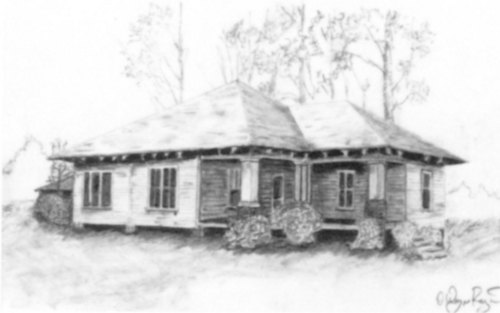
Fig. 55. A rambling California Bungalow on Trenton St., West Monroe (Bldg. 157).
Yet another expression occurs in the West Monroe circa 1926 house in figure 56. The high roof allows space for attic rooms. Note shed roof dormer.
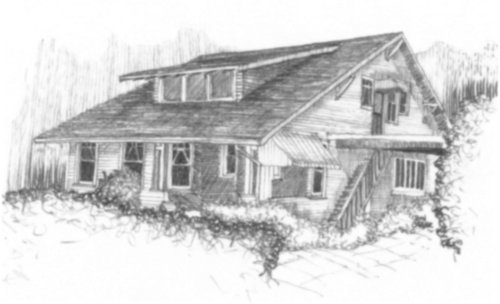
Fig. 56. Another expression of the popular California Bungalow (Bldg. 158).
The California Bungalow style continued to be popular in the region until after World War II when it was supplanted by the “ranch” form house with a concrete slab floor.
When the J. E. Peters house and auxiliary buildings were built in the late 1920’s and 1930’s, the site was on the southern limits of the city of Monroe, but it subsequently was included within the city boundaries. Thus, today a unique rural atmosphere exists within an urban context.
The complex depicted in figures 57 through 60 contains a two story house, garage apartment, storage or quarters building and a pair of water storage tanks.
The two story house, figure 57, contains four rooms over four rooms and a stair and bath facilities. The one story gallery on the front and side provides ample opportunity for relaxation and relief from the heat of the interior rooms in the summer. Note the absence of a chimney; winter heating would have been provided by the newly discovered natural gas.

Fig. 57. The drawings on these pages are of the same site in south Monroe, the Peters house (Bldg. 126).
In the rear of the Peters house is a 1930’s garage apartment, figure 58. This element is a unique feature in the history of urban residential architecture. The automobile became obtainable by the urban family during the second decade of the 20th century, and it was sheltered in a structure separate from the residence. The garage would usually provide shelter for one to two automobiles.
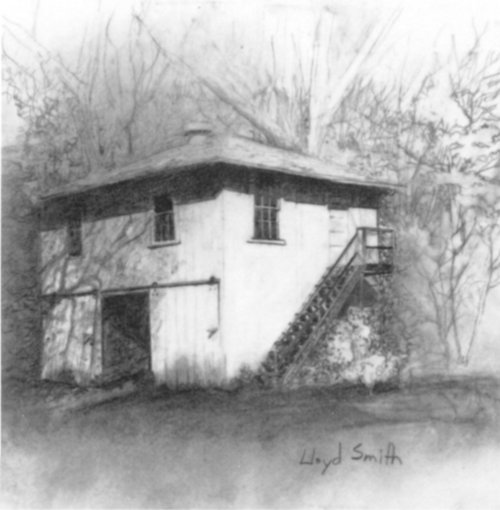
Fig. 58. A garage apartment adjacent to the house. (Bldg. 126).
Often an apartment would be placed above the garage, as shown. Note the exterior access stairway. In post World War II residences the automobile would be sheltered in a garage attached to the main residence; subsequently this garage would relinquish its walls and doors and be known as a “carport.” Thus, the garage apartment holds a unique place in America domestic architecture.
The Peters store house, or quarters, figure 59, also was representative of the era described. This building has exposed rafter ends, five panel doors, milled (not brick) siding, and is raised three steps above the ground.
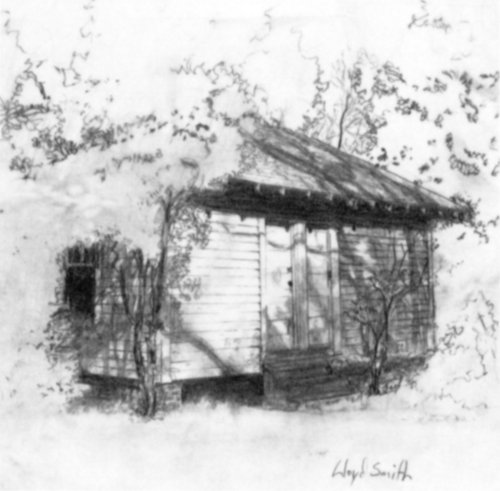
Fig. 59. The storage building in the rear (Bldg. 126).
The water towers shown in figure 60 are elevated to provide gravity pressure for water needed on the farm complex, whether for irrigation or livestock or domestic use. The towers are situated in a grove of pecan trees.
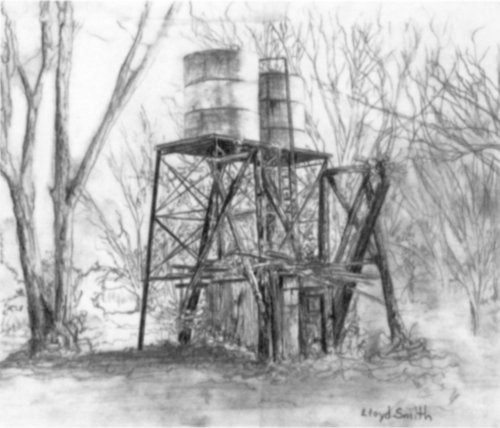
Fig. 60. Water tanks on the farm site (Bldg. 126).
As urbanization increased, the opportunity for complexes such as this to survive decreased. Holdings were subdivided into residential lots, and the rural feeling and inherent privacy which it provided yielded to an environment of urban compactness. This is the price of progress as a city expands.
A distinct contrast exists between the rural ecclesiastical building and that of the urban area. The urban congregations tended to require more stylized edifices for worship. This may be apparent in the examples illustrated herein.
The 1899 St. Matthews Roman Catholic Church is an excellent example of the Gothic Revival style. Characteristics of this style include the tower with belfry and spire, the single or grouped pointed-arch windows, the stepped buttresses and deeply recessed openings and wooden doors. These characteristics are evident in the church in figure 61.

Fig. 61. The 1899 Gothic Revival St. Matthews Church (Bldg. 159).
The Tabernacle Baptist Church on Beard Street, Monroe, was a later version of a style conscious church building. The opening is recessed and has a round arch over the door. A vertical accent was obtained by use of the small tower, figure 62. Brick as an exterior wall finishing material was commonly used in the towns; this contrasted to the almost universal use of wood siding on churches in the rural areas of the parish.
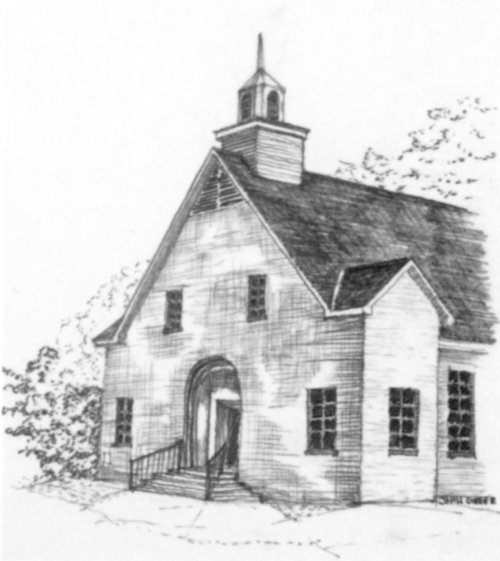
Fig. 62. Tabernacle Baptist Church on Beard Street, Monroe (Bldg. 160).
There are a number of extant 50 year old educational buildings in the Twin Cities which are excellent examples of the various prevailing architectural styles. The Mediterranean style is evident in such elementary schools as Georgia Tucker, Lida Benton, and Barksdale Faulk. Jacobean Revival may be seen in the old Ouachita Parish High School building on South Grand; Art Deco is represented in Neville High School on Forsythe Avenue, Monroe. It is very fortunate that these buildings remain and are either still being utilized as educational facilities or are being converted for contemporary adaptive reuse, the latter being the case in the South Grand building mentioned.
Georgia Tucker School, figure 63, was built in 1919 and named for Mrs. Georgia Tucker Stubbs, a member of a pioneer Ouachita Parish family. Its Mediterranean style features include monumentality, solidity, use of low arches and imaginative towers. It also employs a unique treatment of terracotta in cast panels and columns capitals. One might note the use of free standing decorative nonfunctional columns on the front. The separate entrances for grades one through three and grades four through six are clearly defined.
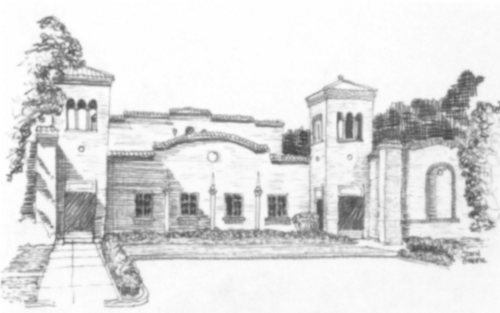
Fig. 63. Georgia Tucker School, 1919 (Bldg. 162).
The Jacobean Revival style was used for the Ouachita Parish High School building depicted in figure 64. Built in the late 1920’s, this three story remnant of the high school complex displays monumentality and elaborate detailing at the South Grand Street entrance to the classroom building. Quoins were used at masonry corners. The roof parapet wall contains decorative penetrations and projections as an expression of the method in which the building relates to the skyline.
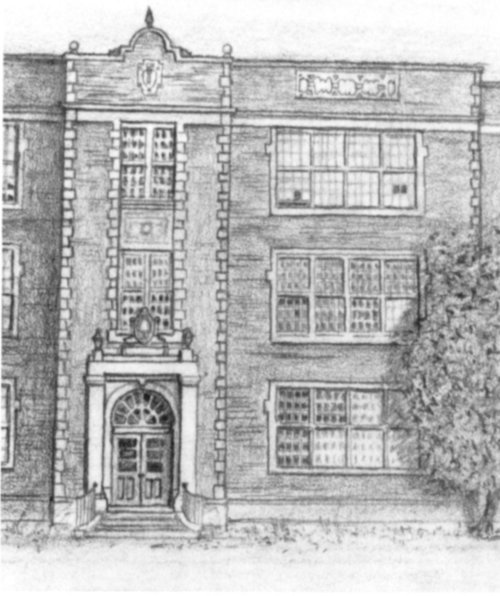
Fig. 64. The Jacobean Revival Ouachita Parish High School building, 1920’s (Bldg. 161).
It has been previously illustrated that the urban residential, ecclesiastical and educational buildings were constructed to reflect current stylistic trends more than their rural counterparts; a similar observation might be made about commercial urban and rural buildings. The urban commercial buildings depicted on these two pages represent some of the stylistic expressions of the Twin Cities from the time of early settlement, the 1840’s, to the period of the oil boom, the 1930’s. As such, they might be viewed as a summary of commercial architecture in the Twin Cities.
The Isaiah Garrett law office, figure 65, was constructed in the 1840’s. Its configuration is similar to that of the small residence of the period, a two room core with rear wing, chimneys on end elevations, and an attached front gallery. This building is now the Colonial Dames Museum.

Fig. 65. Isaiah Garrett law office, 1840’s (Bldg. 163).
The two story commercial building shown in figure 66 was built in the 1890’s on North Grand Street. It contains large glass areas for display and interior light, and the second floor contains arched windows on the street facade but flat lintel windows overlooking the river.
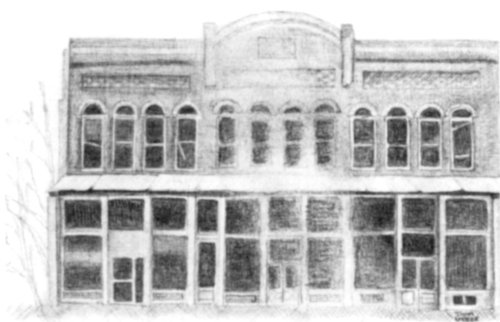
Fig. 66. 1890’s commercial building on North Grand, Monroe (Bldg. 164).
T. M. Parker built a two story commercial building on DeSiard Street in 1908, figure 67. This building was used as a hotel for a long period. There is a similarity in the manner in which the roof lines of the buildings in figures 67 and 68 were constructed, since both parapets have shaped and raised center sections and projecting cornices.

Fig. 67. The T. M. Parker Building on DeSiard Street (Bldg. 165).
The West Monroe 1909 two story building depicted in figure 68 was built with similar characteristics as those previously described, a large glass area on ground floors and a masonry upper facade. But this building contains other individualistic 33 features. The second floor opens onto a balcony which overlooks the Ouachita River, and a very elaborate cast stone lady’s head is incorporated into the pilaster on the left side of the front elevation. A companion sculpture on the right pilaster no longer exists. One might wonder if it were a male or female likeness.
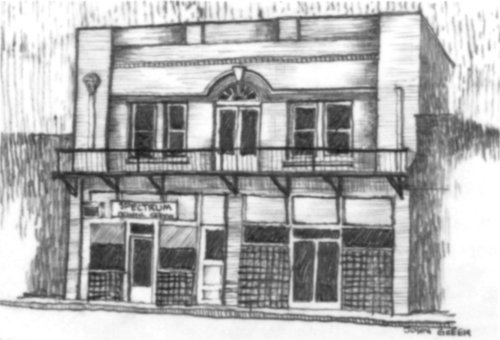
Fig. 68. A West Monroe commercial building, 1909 (Bldg. 166).
Civic architecture is represented by the 1925 Ouachita Parish Courthouse, figure 69. Neoclassicism was used to represent monumentality through the application of engaged Ionic columns on the major facades. Broad entry terraces and steps heightened the drama of entry into the main floor. The roofline contains a balustrade as an expression of uniting the building with the skyline.
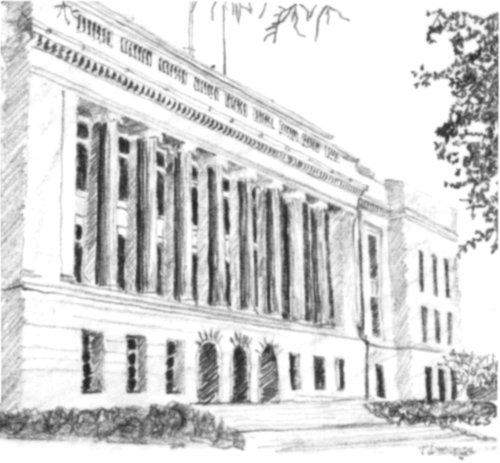
Fig. 69. The neoclassical Ouachita Parish Courthouse 1925 (Bldg. 167).
The Frances Hotel, figure 70, was constructed in 1930 and named for Mrs. Frances McHenry, wife of a founder of Delta Airlines. Its Art Deco style has a pronounced verticality and linear quality. This early Monroe skyscraper has elaborate window and facade treatment on the first three floors with minimal facade decoration on the hotel room floors above. The building is crowned with elaboration on the facades of the top floor. This floor once contained a ballroom which overlooked the city and the river. Arched windows with elaborate projections above broke the skyline. And above the roof was an enormous red beacon which was visible for miles at night. The beacon no longer is lighted.
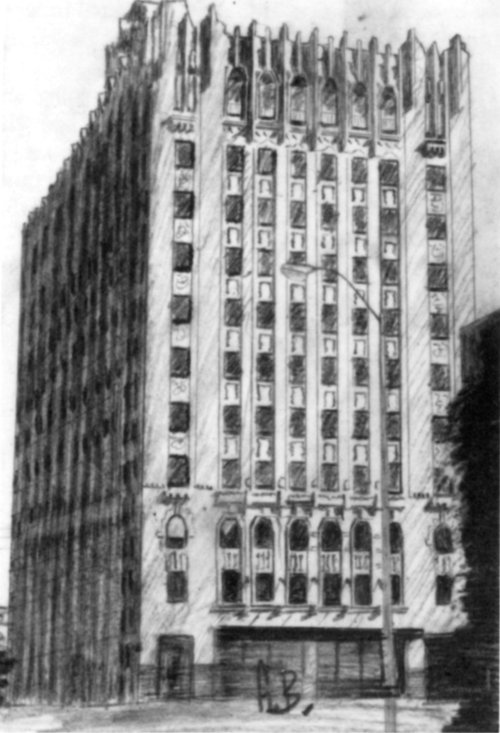
Fig. 70. Frances Hotel, Monroe, a 1930 Art Deco building (Bldg. 168).
The buildings pictured on these and the four preceding pages are examples of the manner in which the designers attempted to create aesthetically pleasing architecture for both the distant and the near-by viewer. Several have interesting rooflines which integrate the built environment with the skyline. They also contain elements which may be viewed from a closer position as a person enters the building; such elements include steps, entry details, and intricate window trim.
Ouachita Parish possesses a rich architectural heritage. In time, this heritage spans from the beginnings of Layton Castle in the early 1800’s to the high rise Frances Hotel of the 1930’s—and on to the present. In terms of style, this heritage includes the simple one room houses as well as representatives of Greek Revival, Queen Anne, Gothic Revival, Colonial Revival, Classic Revival, California Bungalow, Prairie Style, Tudor Revival, and Art Deco.
The life styles and cultures of the inhabitants are reflected and expressed in this architectural heritage. These cultures included that of the small farms west of the river, the plantations east of the river, and the urban culture as seen in the architecture of Monroe and West Monroe. What a rich assortment exists within a 20 mile radius of the center of Ouachita Parish.
But this heritage is in danger. As progress continues and prosperity grows, the architectural heritage often diminishes. Older buildings are seen as liabilities and become victims of the wrecking ball. These buildings, whether constructed of log or brick with Romanesque or Gothic details, will not be erected again. Therefore, the visual insights into past cultures which these older buildings represent are lost forever.
It is hoped that the publication of this collection of Ouachita Parish’s architectural heritage will make the public more aware of its valuable treasure as evidenced in older architecture. And in turn, it is hoped that this awareness will assist in the preservation of vestiges of our traditional past.
F. Lestar Martin

Bright-Lamkin-Easterling House, 1890.
The following listing contains information on extant buildings 50 years old in Ouachita Parish (excluding Monroe and West Monroe, cataloged in the La. Tech Arch. Dept.). Building number is followed by building type designation, porch type, siding and date.
| Survey Number | Type | Remarks |
|---|---|---|
| 1. | One Room | Attached porch, asb. siding, c.1930. |
| 2. | Central hall | Integral gallery, c.1913. |
| 3. | Central hall | Attached gallery, asbestos, c.1917. |
| 4. | Central hall | Attached porch, asbestos, c.1920. |
| 5. | Two room | No gallery, asbestos, c.1920. |
| 6. | Dogtrot | Square logs and notches, c.1880. |
| 7. | Other | Gen. store, integral gallery, vert. bd/batten, c.1910. |
| 8. | Bungalow | Attached gallery, milled siding c.1926. |
| 9. | Other | Liberty Baptist Church, asbestos, c.1915. |
| 10. | Dogtrot | Enclosed, att. gallery, milled, c.1890. |
| 11. | Central hall | Attached gallery, asphalt, c.1900. |
| 12. | Two room | Attached gallery, milled, c.1910. |
| 13. | Central hall | Attached gallery, milled, c.1930. |
| 14. | Other | Gable front & wing, attached porch, milled, c.1910. |
| 15. | Other | Gable front & wing, attached porch, milled, c.1900. |
| 16. | Bungalow | Integral porch, milled, c.1930. |
| 17. | Two room | Rare plan, gingerbread cols. & trim, attached gallery, milled c.1900. |
| 18. | Shotgun | Shotgun, integral gallery, milled c.1920. |
| 19. | One room | Integral gallery, vert. bd./batten, c.1920. |
| 20. | Other | Mt. Horeb Church, milled, c.1920. |
| 21. | Central hall | Integral gallery, milled, 1925. |
| 22. | Bungalow | Integral half porch, milled, 1930. |
| 23. | Other | Triple room, integral gallery, milled, c.1920. |
| 24. | Bungalow | Integral side porch, milled, c.1931. |
| 25. | Other | Bungalow type, attached porch, asbestos, c.1935. |
| 26. | Central hall | Attached gallery, sawn siding, c.1900. |
| 27. | Dogtrot | Enclosed, part half log, attached gallery, milled, 1890, Caldwell farm. |
| 28. | Outbldg. | Round log w/sq. notches, shingle roof, 1880’s, Caldwell farm. |
| 29. | Dogtrot | Integral gallery, vert. bd./batten siding, c.1900, Caldwell Farm. Log Outbuildings. |
| 30. | Bungalow | Attached porch, asbestos, 1937. |
| 31. | Central hall | Attached gallery, asbestos, 1925, Wallace farm. |
| 32. | Shotgun | Shotgun, integral gallery, milled, 1920. |
| 33. | Central hall | Integral gallery, milled, 1920. |
| 34. | Bungalow | No porch, milled, 1930. |
| 35. | Bungalow | Integral gallery, milled, c.1920. |
| 36. | Two room | Integral gallery, milled, c.1920. |
| 37. | Outbldg. | Transverse crib barn, tin siding, c.1930. |
| 38. | Shotgun | No porch, vert. bd./batten siding, c.1920. |
| 35 | ||
| 39. | Bungalow | Attached porch, vert. bd./batten siding 1930. |
| 40. | Outbldg. | Storage, sawn siding, c.1930. |
| 41. | Other | Gen. store, various additions, vert. bd./batten, c.1920 |
| 42. | Outbldg. | Round log, saddle notch corn crib, c.1920 |
| 43. | Shotgun | Shotgun, no porch, vert. bd./batten, c.1920. |
| 44. | Outbldg. | Tranverse crib barn, vert. siding, 1935, Golson fam. |
| 45. | Dogtrot | Attached gallery, sawn siding, c.1930. |
| 46. | Other | Camel-back house, no porch, milled, 1926, Marvin Spanier. |
| 47. | Outbldg. | Single crib storage, round log, saddle notches, 1930, Spanier fam. |
| 48. | Bungalow | Attached gallery, asbestos, 1930. |
| 49. | Outbldg. | Single crib storage, half log, semi-lunate notch, c.1915, Golson fam. |
| 50. | Shotgun | Shotgun, integral gallery, asbestos, c.1930. |
| 51. | Outbldg. | Storage, vert. sawn, c.1930, George Hamilton. |
| 52. | Bungalow | Integral half porch, asbestos, c.1930, Pat Tinsley. |
| 53. | Bungalow | Attached porch, milled, 1933, John Mayes. |
| 54. | Other | Two story Masonic Lodge—rare, integral gallery, sawn, c.1885. |
| 55. | Central hall | Integral gallery, sawn siding, 1898, Golson fam. |
| 56. | Bungalow | Integral porch, vert. bd./batten, 1933, James Young. |
| 57. | Other | Latter Day Saints Church, attached portico, milled, 1910. |
| 58. | Bungalow | Attached gallery, milled, c.1930. |
| 59. | Other | Gen. store, attached porch, milled, 1927, Antley family. |
| 60. | Outbldg. | Double crib, sawn, 1930. |
| 61. | Other | Antioch Church, portico, steeple, asbestos, 1910. |
| 62. | Bungalow | Integral gallery, milled, 1932, Fowler fam. |
| 63. | Other | Frantom Chapel, asbestos, 1916. |
| 64. | Outbldg. | Storage pen, sawn, c.1930, Burkett fam. |
| 65. | Central hall | Attached gallery, milled, c.1920. |
| 66. | Two room | Attached porch, milled, 1918. |
| 67. | Two room | Attached gallery, sawn, vert. bd./batten, 1905, Lovelady fam. |
| 68. | Bungalow | Attached porch, vert. siding, c.1930. |
| 69. | Other | Lapine Methodist Church, milled, c.1915 |
| 70. | Shotgun | Shotgun, integral gallery, vert. bd./batten, c.1920. |
| 71. | Central hall | Integral gallery, vert. bd./batten, 1897. |
| 72. | Two room | Original single pen half log w/semi-lunate notch, att. gallery 1895, C. C. George. |
| 73. | Outbldg. | Tranverse crib barn, square logs, square notch, sawn siding, c.1900, Griffin fam. |
| 74. | Central hall | Attached gallery, vert. bd./batten siding, 1893, Griffin fam. |
| 75. | Central hall | Attached gallery, Masonite, c.1880, James Henry. |
| 76. | Outbldg. | Single crib storage, round log, saddle notch, c.1920. |
| 77. | Two room | Attached porch, vert. bd./batten, c.1880, John Bush. |
| 78. | Single pen | Side addition, half round logs, semi-lunate notch, integral gallery, c.1890. |
| 79. | Two room | Attached gallery, milled siding, c.1910. |
| 80. | Bungalow | Half porch integral, milled, c.1920. |
| 81. | Saddlebag | Attached gallery, vert. bd./batten, c.1880. |
| 82. | Saddlebag | Attached gallery, vert. bd./batten, c.1880. |
| 83. | Bungalow | Attached gallery, vert. bd./batten, 1927, Amos Hollingsworth. |
| 84. | Outbldg. | Half log storage pen, semi-lunate notch, c.1910. |
| 85. | Other | Triple room integral gallery, asphalt, c.1890. |
| 86. | Shotgun | Shotgun, integral gallery, milled, c.1930, Connie Dowdy. |
| 87. | Central hall | Integral gallery, milled, c.1910. |
| 88. | Two room | Original single pen w/additions, half log w/semi-lunate notch, add. vert. bd./batten, c.1880, Baugh fam. |
| 89. | Central hall | Integral gallery, milled, c.1900. |
| 90. | Central hall | Integral gallery, asbestos siding, c.1915, Thomas T. Jones. |
| 91. | Bungalow | Attached gallery, vert. bd./batten siding, c.1930. |
| EAST OF THE OUACHITA | ||
| 92. | Two room | Attached porch, vert. bd./batten, c.1920. |
| 93. | Other | Two story “Carolina I,” “Grecian Bend” plantation house, sawn siding, built 1866 by the Guthrie family. |
| 94. | Two room | Attached gallery, milled, c.1927. |
| 95. | Bungalow | Attached gallery, milled, c.1920. |
| 96. | Bungalow | “California,” integral gallery, milled, c.1930. |
| 97. | Central hall | Integral gallery, milled siding, c.1930. |
| 98. | Other | Church, portico, belfry, milled siding, c.1930. |
| 99. | Outbldg. | Double crib barn, vert. bd./batten, c.1920. |
| 100. | Central hall | “Greek Revival” plantation house integral gallery, milled siding, c.1880. |
| 101. | One room | Attached porch, additions, vert. bd./batten siding, c.1900. |
| 102. | Central hall | “O’Kelly House,” moved from N. 6th and Washington, Monroe; sawn siding, integral gallery, dormers added, c.1860. |
| 103. | One room | Vert. sawn siding, c.1920. |
| 104. | Shotgun | Shotgun, attached porch, vert. bd./batten siding, c.1910. |
| 105. | Two room | Attached gallery, vert. bd/batten, c.1920. |
| 106. | Other | “Little Bell Missionary Baptist Church,” milled, c.1920. |
| 107. | Other | Triple room, integral porch, horiz. and vert. siding, c.1910. |
| 108. | Bungalow | Attached gallery, milled, c.1920. |
| 109. | Outbldg. | Single crib storage, shed additions, c.1937. |
| 110. | Central Hall | Attached gallery, milled, c.1920. |
| 111. | Two room | Attached gallery, asbestos, c.1930. |
| 112. | Outbldg. | Double crib barn, vert. sawn, c.1930. |
| 113. | Bungalow | Integral gallery, milled, c.1930. |
| 114. | Two room | Integral gallery, milled, c.1920. |
| 36 | ||
| 115. | One room | Integral gallery, vert. bd./batten, c.1920. |
| 116. | Two room | Integral gallery, milled, c.1920. |
| 117. | Central hall | Log room enclosed, integral gallery, sawn siding, original 1850 by Howard family, now Stubbs plantation house. |
| 118. | Two room | Integral gallery, vert. bd./batten siding, c.1910, on Stubbs plantation. |
| 119. | Two room | Attached gallery, sawn siding, c.1920, on Stubbs plantation. |
| 120. | Two room | Integral gallery, vert. bd./batten, c.1910, on Stubbs plantation. |
| 121. | Bungalow | “California Bungalow,” milled, c.1920, on Stubbs plantation. |
| 122. | Central hall | “Greek Revival,” integral gallery, milled siding, “Cox House.” 1882. |
| 123. | Bungalow | Attached gallery, milled, c.1933, Henry Cyers. |
| 124. | Bungalow | Integral gallery asbestos, c.1920. |
| 125. | Shotgun | Two shotguns, attached and integral porches, milled, c.1920. |
| 126. | Other | Two story, four room over four room, attached porch, milled, c.1927, various other buildings, water tanks. |
| 127. | Central hall | “Whitehall Plantation” house, Greek Revival, sawn siding, integral gallery, dormers, fine millwork, 1858. National Register. |
| 128. | Outbldg. | Single crib, square log half dovetail notch, c.1900. |
| 129. | Two room | Integral gallery, asbestos, c.1910, on “OZO,” McHenry Plantation, McClain and McDonald families. |
| 130. | Central hall | 1½ story, various additions to 1838, “Refugio” plantation house. McClain and McDonald families. |
| 131. | Central hall | Integral gallery, asbestos, c.1830-50, Garrett family. |
| 132. | Shotgun | Shotgun, attached porch, asphalt, c.1930. |
| 133. | Central hall | Integral gallery, milled and asphalt siding, c.1880, Faulk family. |
| 134. | Other | “Greek Revival,” portico gallery, additions, milled and sawn siding, built 1838 by Jean Baptiste Filhoil, grandson of Don Juan Filhoil. “Logtown” plantation house. Nat. Reg. |
| 135. | Shotgun | Attached gallery, milled, c.1930. |
| 136. | Shotgun | Integral gallery, milled, c.1920. |
| 137. | Central hall | Integral gallery, milled, c.1900. |
| 138. | Central hall | “Boscobel,” integral gallery, sawn, Greek Revival, built c.1820. By Judge Henry Bry. Nat. Reg. |
| 139. | Central hall | 1½ story, integral gallery, milled, c.1900. |
| 140. | Central hall | Integral gallery, milled, c.1920. |
| 141. | Outbldg. | Transverse crib barn, vert. planks, c.1930. |
| 142. | Central hall | Integral gallery, milled siding, c.1920. |
| 143. | Two room | Like a bungalow plan, half porch attached, milled c.1930. |
| MONROE AND WEST MONROE | ||
| 143a. | Central hall | “Lower Pargoud overseer’s house,” integral gallery, sawn, built c.1835. Nat. Reg. |
| 144. | Other | “Layton Castle,” renovated as “Chateau” in 1910’s, original raised Louisiana plantation house incorporated in house. Begun by Judge Henry Bry, c.1820’s. Nat. Reg. |
| 145. | Other | “Queen Anne” gable front and wing, porches, milled, c.1890’s. |
| 146. | Other | “Queen Anne” gable front and wing, porches, milled, c.1890’s. |
| 147. | Other | Two story, porches, milled siding, built 1905 by Ernest L. Neville. |
| 148. | Central hall | Raised, integral galleries, milled, J. H. Trousdale, Sr., 1914. |
| 149. | Central hall | Two story, portico, milled, Weaks family, c.1900’s. |
| 150. | Central hall | Two story, portico, milled, Gov. Luther Hall, 1906. Nat. Reg. |
| 151. | Central hall | Two story, portico, brick, Travis Oliver I, c.1930’s. |
| 152. | Other | Two story Tudor Revival, built 1920 by Elmer Slagle, Sr. Nat. Reg. |
| 153. | Other | Prairie style house designed by William Burley Griffin, 1926. Nat. Reg. |
| 154. | Bungalow | “California bungalow,” shingle siding, c.1930. |
| 155. | Bungalow | “California bungalow,” milled, c.1920. |
| 156. | Bungalow | “California bungalow,” porches, c.1930. |
| 157. | Bungalow | “California bungalow,” integral porches, milled, c.1920. |
| 158. | Bungalow | “California bungalow,” integral gallery, milled, c.1926. |
| 159. | Church | St. Matthew’s Roman Catholic Church, Gothic Revival, brick, 1899. |
| 160. | Church | Tabernacle Baptist Church, brick, c.1935. |
| 161. | School | Ouachita Parish High School, Jacobean Revival, c.1926. Nat. Reg. |
| 162. | School | Georgia Tucker Grammar School, Mediterranean, brick, 1919. |
| 163. | Office | Isaiah Garrett Law Office, brick, 1840’s. National Register |
| 164. | Commercial | Two story brick store, 1890’s. |
| 165. | Commercial | Two story brick store, built 1908 by T. M. Parker. |
| 166. | Commercial | Two story brick store, 1909. |
| 167. | Civic | Ouachita Parish Courthouse, Neoclassical, 1925. Nat. Reg. |
| 168. | Commercial | Frances Hotel, multi-story, Art Deco, built 1930 by Carl McHenry. |
| 169. | Other | Queen Anne, Bright-Lamkin-Easterling house, National Register, 1890. |